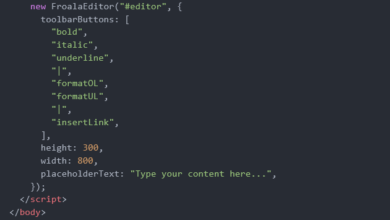Carbonization Furnace & Charcoal Production Line Guide

The demand for sustainable and efficient charcoal production has led to significant advancements in technology. Among these innovations, the continuous carbonization furnace stands out as a pivotal development. Coupled with a comprehensive Charcoal Production Line, this system offers an integrated solution for converting biomass into high-quality charcoal efficiently and sustainably.
Understanding the Continuous Carbonization Furnace
What is a Continuous Carbonization Furnace?
A Continuous Carbonization Furnace is an industrial device designed to convert organic materials, such as wood chips, sawdust, rice husk, coconut shells, and other biomass, into charcoal through a high-temperature, oxygen-limited process known as pyrolysis. Unlike traditional batch processing methods, continuous furnaces allow for uninterrupted feeding and discharging of materials, ensuring a steady and efficient production flow.
Key Features and Components
- Continuous Feeding and Discharging: This design minimizes downtime, enhancing productivity.
- High-Temperature Operation: Typically operates between 500°C to 800°C, ensuring complete carbonization.
- Energy Efficiency: Utilizes flue gas recovery systems to preheat incoming materials, reducing fuel consumption.
- Environmental Considerations: Equipped with gas purification systems to minimize emissions and adhere to environmental standards.
- Modular Design: Allows for scalability and customization based on production needs.
The Charcoal Production Line: From Biomass to Charcoal
Overview of the Charcoal Production Process
The charcoal production Line encompasses a series of interconnected processes that transform raw biomass into finished charcoal products. The typical stages include:
- Raw Material Preparation: Biomass is collected and pre-processed to achieve uniform size and moisture content.
- Drying: Moisture is removed from the biomass to facilitate efficient carbonization.
- Carbonization: The dried biomass is fed into the Continuous Carbonization Furnace, where it undergoes pyrolysis to produce charcoal.
- Cooling: The hot charcoal is cooled to room temperature to stabilize its structure.
- Crushing and Sieving: The cooled charcoal is crushed and sieved to achieve desired particle sizes.
- Briquetting or Shaping: The charcoal is molded into specific shapes or briquettes for various applications.
- Packaging: The final product is packaged for distribution and sale.
Integration with the Continuous Carbonization Furnace
Integrating the Continuous Carbonization Furnace into the production line streamlines operations by:
- Reducing manual labor and associated costs.
- Enhancing product consistency and quality.
- Increasing overall production capacity.
- Minimizing energy consumption through efficient heat utilization.
See also: Advancements in china oil purifier Technology
Applications and Benefits
Applications
The integrated system is suitable for various applications:
- Industrial Fuel: High-quality charcoal can be used in industrial furnaces and kilns.
- Barbecue Charcoal: Produces uniform and long-burning charcoal suitable for grilling.
- Activated Carbon Production: Charcoal can be further processed to produce activated carbon for water and air purification.
- Hookah Charcoal: Specifically shaped charcoal for use in hookah smoking.
Benefits
- Sustainability: Utilizes renewable biomass resources, reducing dependence on fossil fuels.
- Economic Viability: High-efficiency processes lead to cost savings and increased profitability.
- Environmental Compliance: Advanced emission control systems ensure adherence to environmental regulations.
- Scalability: Modular design allows for easy expansion to meet growing demand.
Investment Considerations
When considering the implementation of a Continuous Carbonization Furnace and Charcoal Production Line, several factors should be evaluated:
- Initial Capital Investment: Costs associated with purchasing and installing the equipment.
- Operational Costs: Ongoing expenses, including raw materials, labor, and energy.
- Return on Investment (ROI): Projected profitability based on production capacity and market demand.
- Regulatory Compliance: Ensuring the system meets local environmental and safety standards.
Maintenance and Operational Best Practices
To ensure optimal performance and longevity of the system:
- Regular Maintenance: Implement scheduled inspections and servicing of the furnace and associated equipment.
- Operator Training: Ensure personnel are adequately trained in operating and maintaining the system.
- Quality Control: Monitor product quality at each stage of the production process to maintain consistency.
- Safety Protocols: Establish and enforce safety procedures to protect workers and equipment.
Conclusion
The integration of a Continuous Carbonization Furnace within a comprehensive Charcoal Production Line offers a modern, efficient, and sustainable approach to charcoal manufacturing. By leveraging advanced technology and streamlined processes, producers can meet the growing demand for high-quality charcoal products while adhering to environmental standards and achieving economic profitability.
For more information on implementing a Continuous Carbonization Furnace and establishing a Charcoal Production Line, consider consulting with industry experts and equipment suppliers to tailor a solution that meets your specific needs and objectives.




